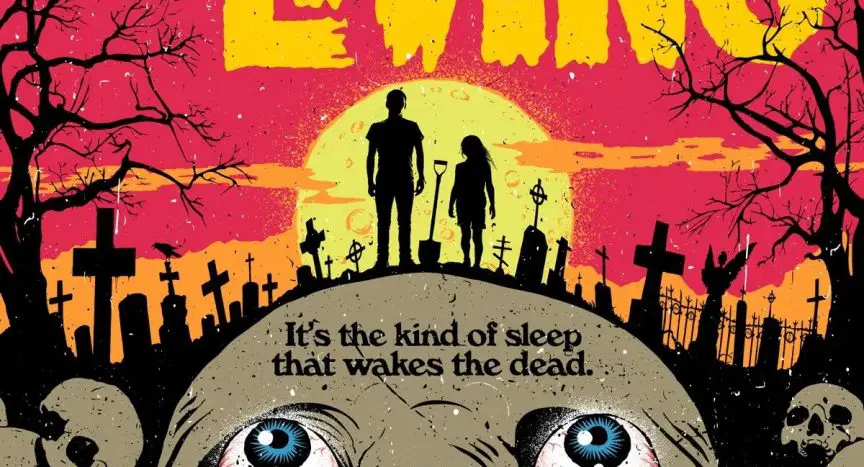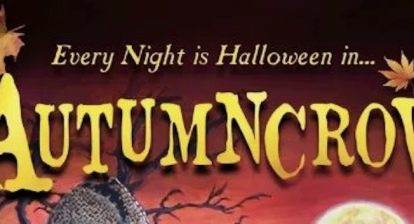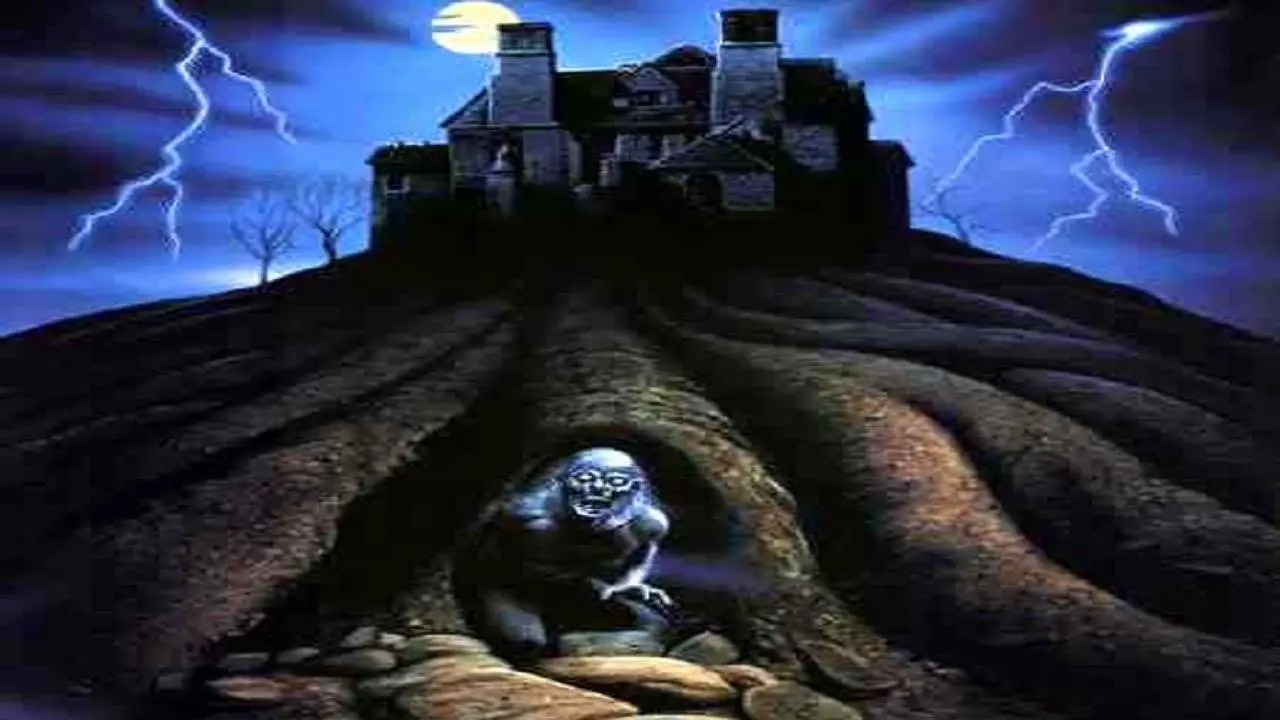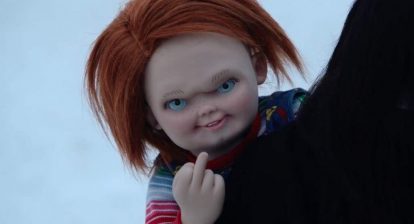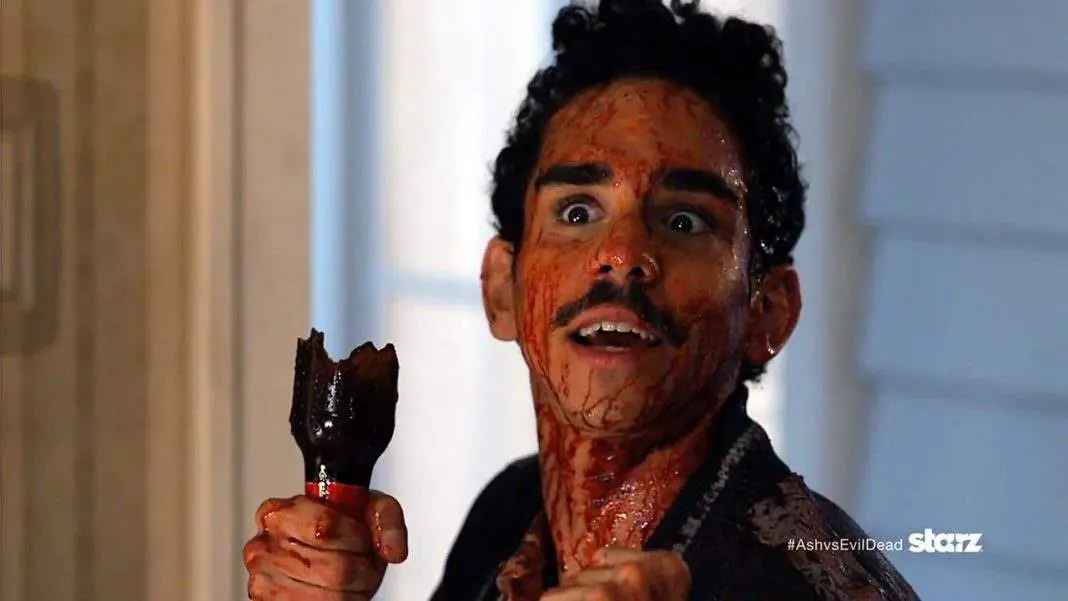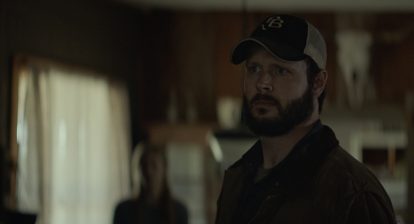The market for young adult horror series experienced a revitalization on the edge of the 2010s. Alongside the return of R.L. Stine’s Goosebumps in the form of the HorrorLand series, publishers were greenlighting and releasing brand new ongoing horror titles for children and young adults.
Amongst the series which have populated the market for the past decade, there’s Frightwatch, Frightville, Frightland, Creepover, Haunted, and Spineshivers. There’s also been rereleases of Christopher Pike’s Spooksville and Edgar J. Hyde’s Creepers from the ’90s.
One of the most recent titles to emerge is Tyler Miller‘s Nevermore, from Miller’s very own Reluctant Reader Books. At three books and counting, Nevermore utilizes a shared setting in a small town bearing the same name as the title, where strange and disturbing things happen.
The three books currently available to read are We Bury The Living, Death Cab, and The Thirteenth Floor, with more on the way. After reading the three Nevermore entries, I reached out to author Tyler Miller to ask a few questions about the title’s inception, inspiration, and his thoughts about children’s horror.
WH: Hi Tyler. Thank you for taking the time to answer some questions for Wicked Horror.
Tyler: Thank you for having me. I appreciate it.
WH: First, can you tell us a little about the founding of Reluctant Reader Books? As in the goal of the publisher and what sort of stories you strive to deliver to audiences.
Tyler: Reluctant Reader Books came out of my experiences as a teacher. I had worked with a lot of students who didn’t really enjoy reading or who quite frankly hated it altogether. I think every teacher and most parents are familiar with kids who don’t find reading all that appealing.
In addition to that, I realized that even though we’re living in a wonderful time for readers – there is so much out there for young people to read these days – it’s not really a great time for reluctant readers. Publishers are more interested in books that double as doorstops: massive books that form an unending series. Which is great if you love to read. But if you don’t…
What I wanted to do with Reluctant Reader Books was fill that gap. I wanted to publish books that appealed to kids who didn’t love reading.
WH: How was the concept for Nevermore first conceived? How long did you work on refining the idea before it was ready to go to print?
Tyler: I was in a bookstore in Spokane, Washington one day when it hit me that there weren’t any books in the kids section that I would have wanted to read when I was a kid. There were lots of fantastic titles, but I was a big horror reader as a kid, and there weren’t any horror books. It hit me that there was a gap in the market and someone should fill it.
I don’t think I’ve ever accurately predicted anything in my life. Ask my wife. I pick every football game wrong. But I think I was right about that gap, and a few years after that idea struck me, a wave of horror novels started hitting the market. So I wasn’t the only one who saw it.
Now there are a lot of great horror writers finding success in the field: JW Ocker, Gary Ghislain, JH Reynolds, Ally Malinenko, Phil Hickes, and Lorien Lawrence just to name a few.
WH: The overall concept of Nevermore is that it’s a strange town in the Northwestern United States where terrifying things happen. I’ll be asking some individual questions about the three books you have right now and the future of the franchise, but first, can you tell us a bit about Nevermore the town? What’s it like living there?
Tyler: Nevermore is based on my hometown – Chelan, Washington. It’s basically the same place as the books, minus the undead zombies and phantom cars and all the other fun stuff.
I wanted to write a series similar to Goosebumps where each book was a new installment but not necessarily a single continuous story. But I wanted more continuity than Stine had provided, so I decided to set each book in the same locale.
Part of the fun was deciding what parts of Chelan to include and what to leave out. Since Nevermore is fictional, I threw in a lot of locations from my childhood that no longer exist, and I stole ideas from other writers I admire. Dupin’s shop in the books is just Bruce Coville’s Magic Shop under another name.

WH: The first book, We Bury The Living, is about siblings Finn and Jamie vacationing with their weird aunt and uncle in Nevermore. Their relatives run a funeral home near the Eldorado Cemetery, and discover the dead who’re buried beneath the graves aren’t exactly resting peacefully. Because this was the first in the series, what was it like working on the book and getting it out there? How’d it feel to see the story printed and published for readers to enjoy?
Tyler: We Bury the Living was the most difficult simply because it was the first book that went through our audience testing process. I wanted our books to not just written for reluctant readers but designed for them too. So we created a fairly rigorous process for experimenting with text sizes, fonts, line spacing, etc. Each iteration was given to teacher friends of mine to trial run with students from fifth to eighth grade.
Then we used the feedback from the kids to eventually narrow down the design elements so that they were more ideal for reluctant readers. The goal was to make the books as easy to read – from a design perspective – as possible, thus reducing the amount of effort a reluctant reader had to put in to finish the book.
WH: The second book, Death Cab, is about a boy named Danny Ferry learning more about the strange black cab his father worked on before he died. Behind the wheel, Danny discovers the cab is meant to bring deceased souls to their next destination, but it looks like Danny might be making that trip himself in the near future. Death Cab features a lot of nods to Greek mythology’s concepts of death and the afterlife. Danny’s name “Ferry” referring to “ferryman,” Lethe Avenue, the Styx Wafting & Draying service, even the use of orbols to help the dead pass on. What was the research for this one like in putting it all together?

Tyler: Death Cab required the most amount of research of the three, but to be honest, it wasn’t a lot. I don’t care much for research when it comes to writing fiction. I don’t have the stamina for it, and often the research starts to take me down rabbit holes that I struggle to escape from.
I’m a naturally curious person, so research tends to become a never ending doom loop unless I cut it off early. With Death Cab, I wanted just enough detail to make the story more interesting, but not so much that I would feel like I needed to start changing the story to fit the research.
WH: The third book, The Thirteenth Floor, focuses on Horacio and Karina moving into a new apartment building featuring an antique elevator from a hotel in Chicago. They quickly discover the elevator can take them beyond the several floors in the building, and they embark on a rescue mission to find and save the people who’ve vanished into the mysterious 13 th floor. You built up a colorful cast of characters with this, including proactive leads who immediately take it upon themselves to do something when they learn about the people who’ve been lost to the 13 th floor. Tell us a bit about what it was like putting this book’s cast together.
Did You Know? Wicked Horror TV Has Classic and Independent Horror Films Available to Stream for Free!

Tyler: The Thirteenth Floor needed a larger cast because of the idea that people had been disappearing onto the thirteenth floor for a long time. It was simply more menacing that way, this idea that it had been happening for decades and no one knew why.
I knew I wanted a kind of carnival feel to the book too. A sort of Something Wicked This Way Comes trapped inside a hotel. Hence there’s a clown, the World’s Strongest Woman, etc.
The idea for the cursed floor itself came from an old sci-fi show called The Lost Room starring Peter Krause. In that show it’s a cursed motel room, but I liked the idea of the classic thirteenth floor. There’s just so much mythology around the number thirteen. That was fun to play with.
WH: Over the first three books you’ve slowly built up Nevermore as a tangible place and location. The books frequently mention an author named Mark Stevans, the Ernest Valdemar hospital, Dark Score Lake, and the New Bridge and Old Bridge. I know I’ve been interested in who Mark Stevans is and if he’ll be featured in more books to come.
Tyler: Good question. The three books in publication were not written in the order they were published. I actually wrote seven books and then selected three to start with for publication. It’s not critical to understanding the series in any way, but one result is that there are mentions of characters or events that take place in other books that aren’t available yet.
Mark Stevens is the resident horror author in Nevermore, a clear nod to Stephen King. The name, however, is from an old Hardy Boys novel called Real Horror. I was a huge Hardy Boys fan when I was a kid.
Part of the fun of being a writer is you get to make all these nods to other works or authors that influenced you, and maybe no one ever recognizes them. That’s fine, because you know they’re in there.
WH: You’ve mentioned to me in the past that there are future titles planned for the Nevermore series. I know I’m excited for one that was alluded to in Death Cab, involving mention of an evil doll and a boy being turned into a Christmas ornament. What can you tell us about Nevermore’s future?
Tyler: The Christmas book is one that’s written but not yet published. That idea came directly from the Elf on the Shelf, which I was completely oblivious to until my wife and I went to a Christmas party at a friend’s house. We didn’t have kids yet, but our friends did, and they were explaining how their son was obsessed with Elf on the Shelf. They told us all about how many different places and arrangements they had concocted for their son’s Elf, which was named Findel.
I thought then – and still do now – that Elf on the Shelf sounded horrifying. And naturally I wondered what would happen if the Elf came to life. Certainly not the world’s most original idea, but there’s something wickedly fun about horror stories set at Christmas.
WH: Tyler, what are your overall thoughts about horror fiction and writing for kids? You make a conscious effort not to dumb down for your readers while telling stories that aren’t overly complicated and dense. You even include references some kids may not get right off, like the Witches of Eastwick nod in the first book. It’s nice to see more authors having faith in what their target audience can handle.
Tyler: When I first set out to write the Nevermore books, the market felt thin to me. There were these great authors from past decades like RL Stine and Christopher Pike, but there wasn’t much contemporary fiction that really stood out. But that’s changed significantly.
I strongly recommend horror fans check out the middle grade field. A lot of the best writing in the genre is being done there. Writers like Katherine Arden and JW Ocker are doing bold and brilliant things. Books like The Smashed Man of Dread End by Ocker, Tales to Keep You Up at Night by Dan Poblocki, and The Ghouls Next Door by Gary Ghislain are really crafty, inventive and sharply written.
Adult horror is also seeing a renaissance, but there’s a tendency to overwrite and stuff books with fluff at the adult level. You can’t do that at the middle grade level because kids just won’t read it if you do. So instead you get books that are leaner and more direct.
The author pushing the boundary of what kids can handle the most is Ocker. My hat’s off to him. His work is phenomenal, and he deserves a much wider audience.
Ultimately, I think kids like being scared. I know that sounds insane, but I sincerely believe it. And I think that’s why the genre never dies out. It’s fundamental. A lot of ink has been spilled on the subject of why, but I don’t really think there’s an answer. It’s like trying to analyze a great comedian. Robin Williams was just damn funny. You don’t need a psychoanalyst to explain why.
Follow us on: Twitter and Facebook.
